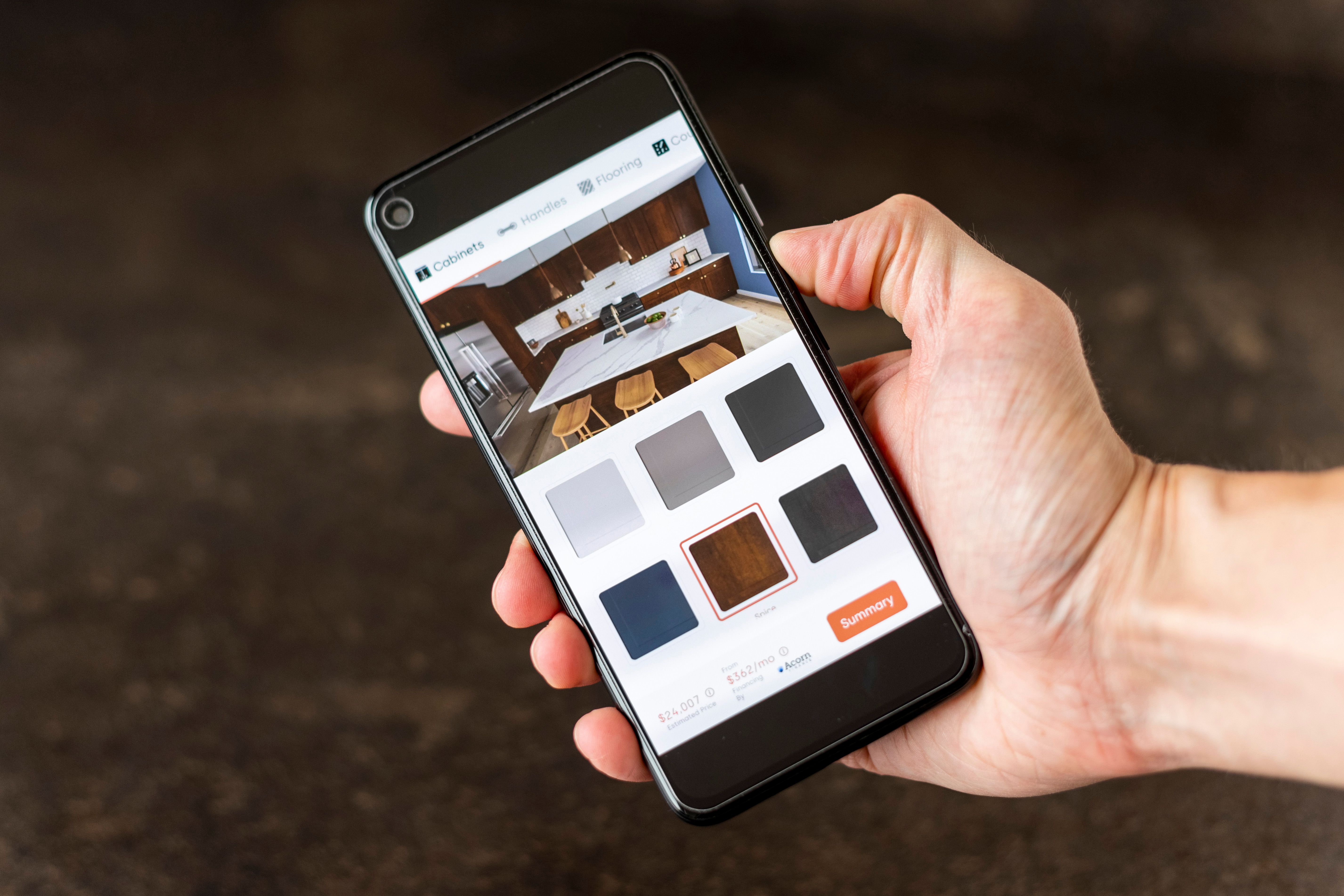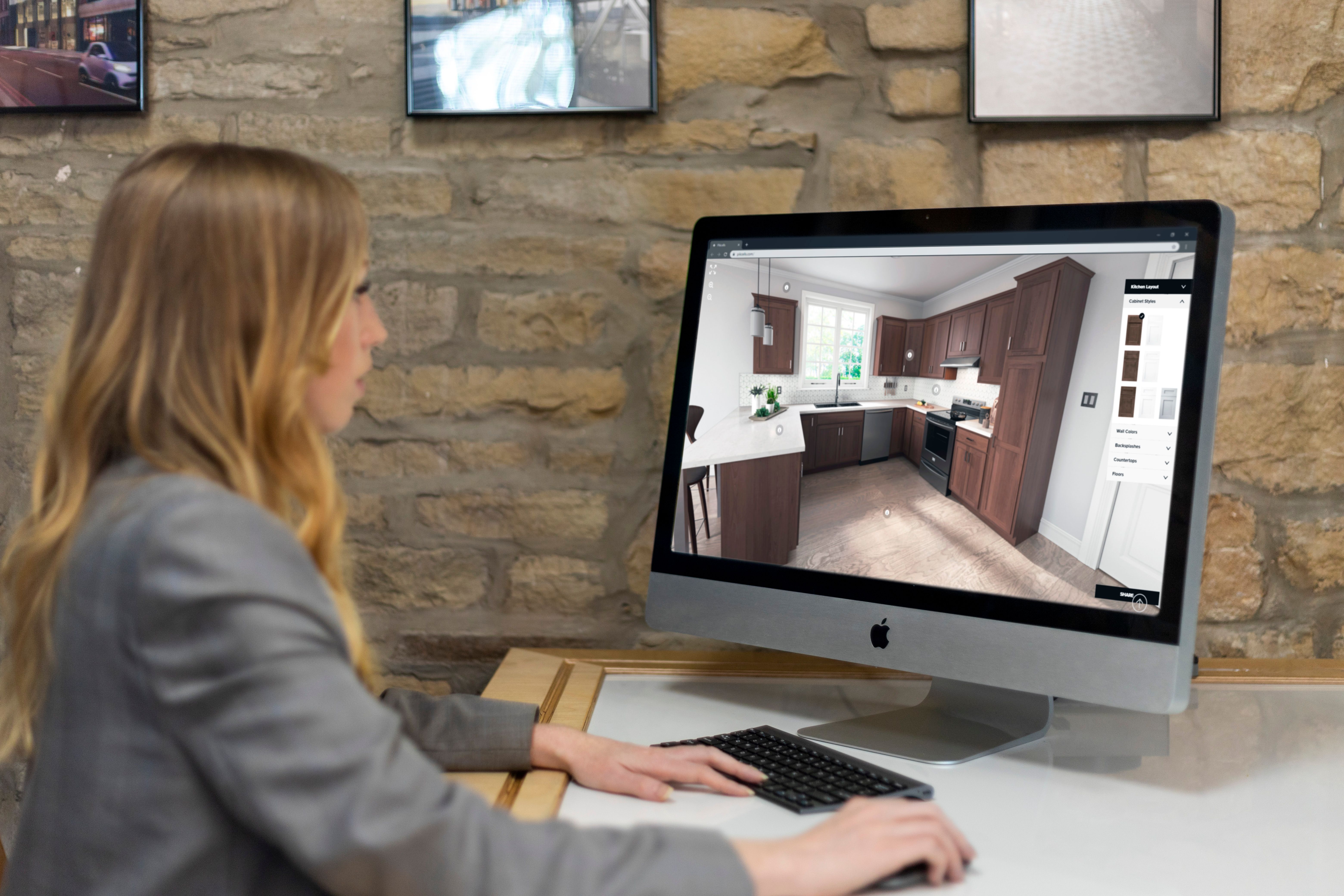Why are high-quality configurators the key to inspiring customers and driving sales?
The design community has much to gain by re-evaluating how it is onboarding tech-savvy customers, as well as optimising their options for upselling and data gathering. Asking challenging questions about your business and your systems will always set you apart from the competition, especially if you want to cement your reputation (or target a particular niche) as the premium sector stands strong. In fact, despite volatility in the housing market, the prime Central London market is proving resilient and so are many other hotspots nationwide.
Taking the long-term view and the need to get projects moving quickly and efficiently, our feedback from the interiors industry is that complex design tools are increasingly too small and overly complicated for a time-poor consumer to grapple with; especially when trying to use them on a smartphone. We are finding that the benefits of using planning tools which are second nature to a professional, aren’t immediately obvious to the non-specialist, particularly as what consumers really want are captivating ideas in an easy-to-use experience. Planning tools are a necessary part of the sales process, but they should not be the first touch point a customer uses to interact with a product range.

Visualisers are coming to the fore as inspirational tools which feature a curated product range and almost all product types including the furniture, hardware, surfaces, fixtures and fittings. This makes it incredibly easy for a customer to get a 3D photo-realistic flavour of how a designer’s well-known signature style will enhance their space and up-level their lifestyle, rather than relying on flat 2D graphics. Customers can start trying out ideas immediately in the comfort of their own home if you have a visualiser on the landing page of your website and personally pre-qualify themselves as warm leads, as they have already started the design process virtually.


The latest visualisers are designed to be fun and immersive with on-screen prompts, as well as showcasing the high quality of your curated products to make selection easy for clients. This is great news as given the desire for immersive experiences and visual richness when planning a new project, clients can often feel overwhelmed and confused by all the options, taking it longer for them to reach decisions. The latest neuroscience shows that endless decision making depletes the brain and decision fatigue sets in, so that shows we need to make the design process as easy and intuitive as possible. As research on Gen Z confirms that buying on intuition is much more common than previously recognized, I think it makes sense to lean into this with a system, which is faster, higher quality and more affordable when compared to market equivalents.
Research from Deloitte states that 42% of consumers who are interested in customised products or services would rather be led by brands and choose from a selection of options and I would anticipate this percentage is even higher in the design community when time-poor decision-makers are keen to defer to a reputable specialist they know, like and trust.

As gatekeepers to a project and general advisors, designers and architects often need to communicate with a wide range of contractors and stakeholders on large scale projects, so choosing a multi-platform, accessible visualiser is key when sharing and amending blueprints. Expectations are higher than ever so you need systems which will deliver white-glove customer service as well as enhancing your own reputation as a tastemaker and industry leader. In my experience, businesses can be so focused on delivering to the end-user they neglect their own needs by using out-of-date processes until change is forced upon them.
In addition to the growing appetite for personalisation in the luxury market, we all recognize that data is the new currency when it comes to shaping the future. This is why the market is demanding next generation visualisers with an analytics section so users can easily analyse the data and habits being generated by their customer base. According to Deloitte, 22% of consumers are happy to share some data in return for a more personalised product or service. And as leading visualisers are making it child’s play for consumers to see the benefits of customisation, my feeling is this will make it easier to gather data as well as increase your profits for a real win-win situation.

High-function features also include providing up to 85% more space to present products via the use of 360-degree panoramic images, translating into even opportunities to sell them. And if you intend to grow the contract side of your business with long-lasting partnerships with developers, it is worth knowing that according to the Boston Consulting Group there is an average 35% in customer retention for companies that use visualisers.
Investing in a visualiser is affordable and can start at less than £10,000. Look out for visualisers which are photorealistic, deliver fast load times, greater personalization, and incorporate a call to action to drive warm leads and enable deeper consumer insight while ensuring data security. In addition, the latest market-leading technology ensures device compatibility across multiple device types and browsers and supports and elevates the experience of designers and end users alike.
The ROI on a good quality visual is well worth the investment, Aberdeen Group Study reports there is a 20% average increase in revenue for companies that have products which can be visualised online, and so by harnessing a visualiser you will speed up decision making, which in turn will accelerate the sales process and impact the number of projects commissioned.
